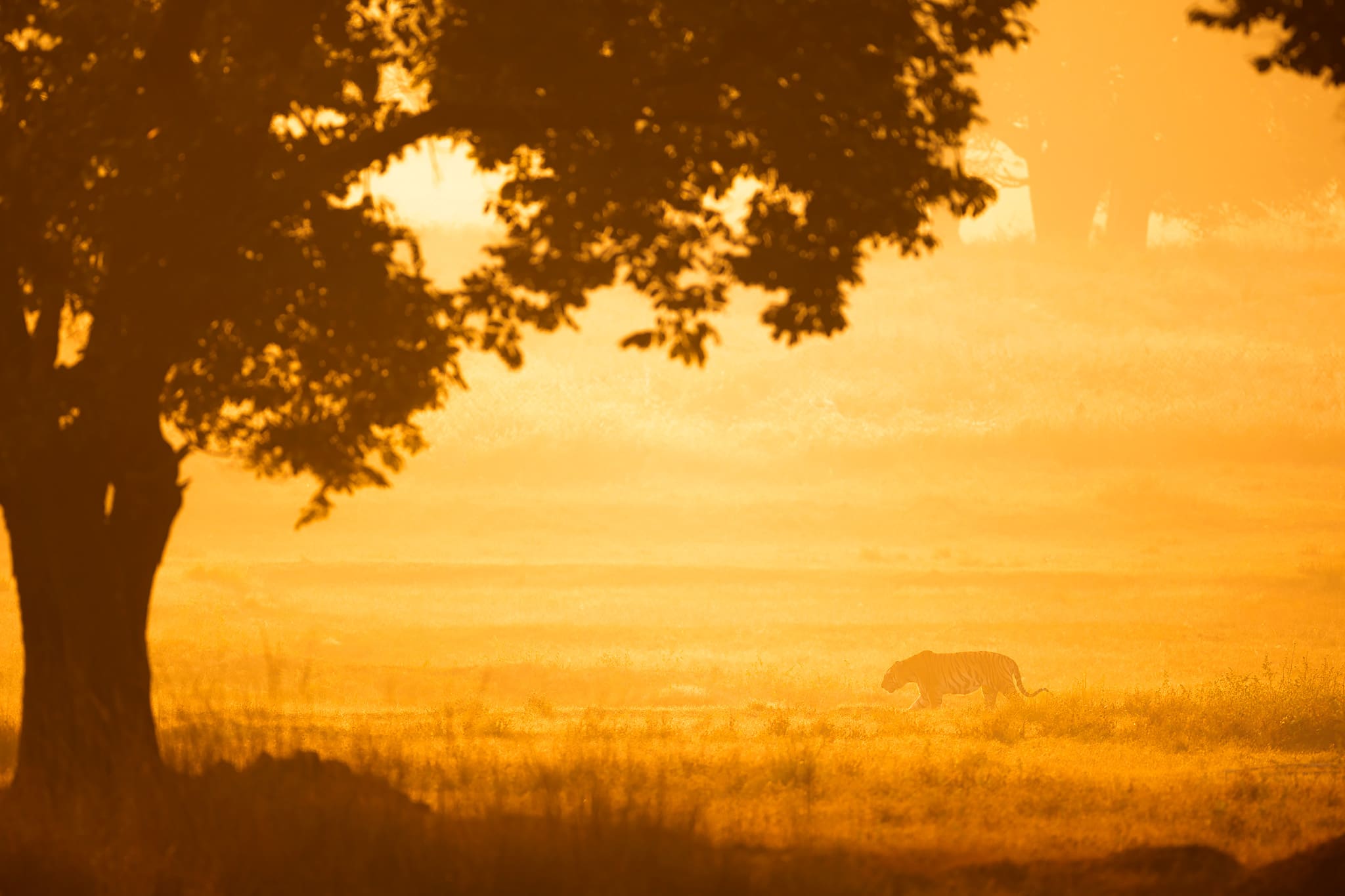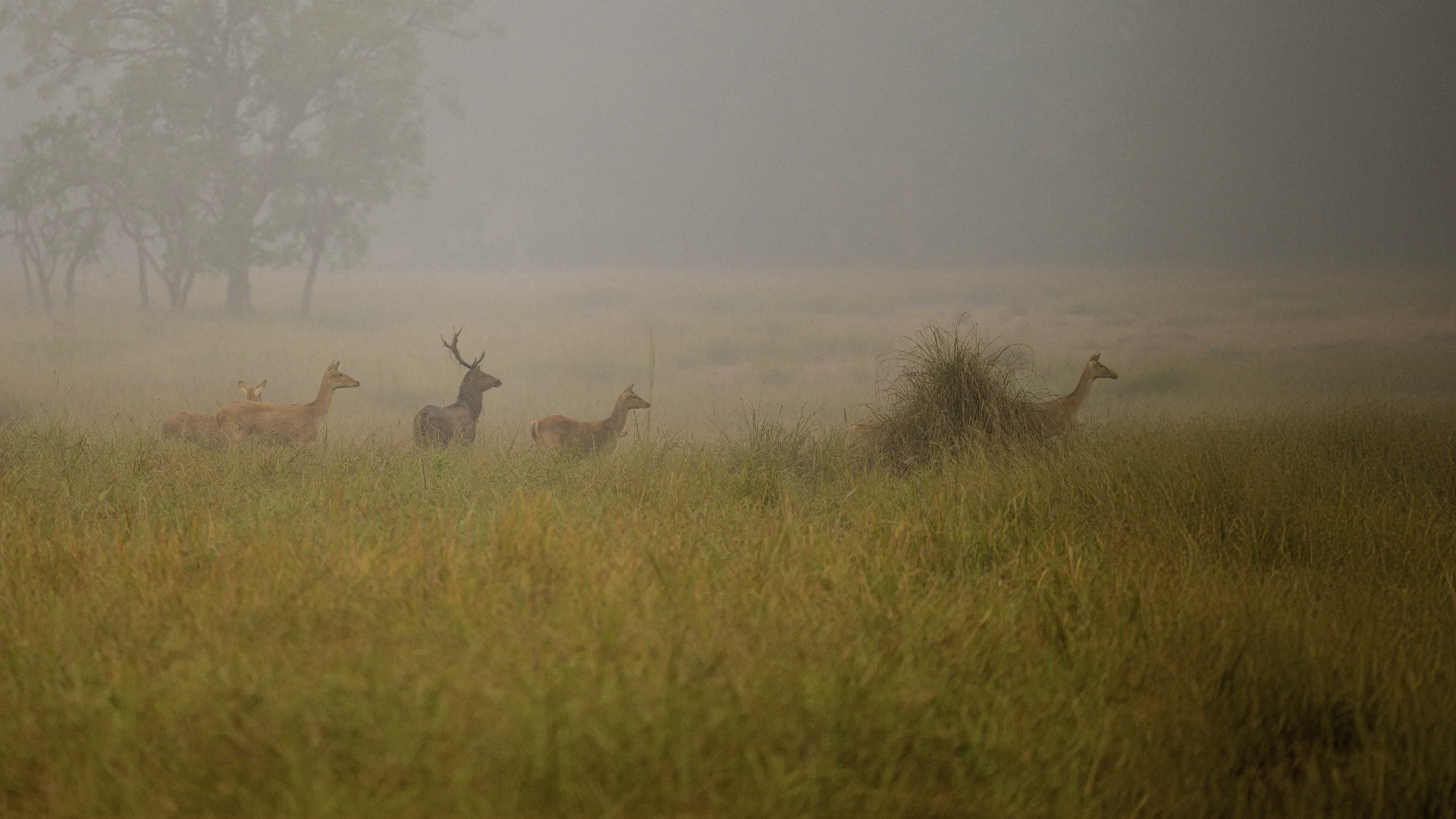
Kanha's winter magic
Winter settles into Kanha slowly, almost as if the forest is preparing for a performance. The mist begins to rise from the waterholes at first light, drifting gently across the sal forest. As the morning grows colder, a thick layer of frost forms on the grass, turning the entire meadow into a sparkling white carpet. On a good chilly winter morning, you can even see the whole grassland covered in frost. The landscape of Kanha changes.
Kanha National Park, being one of the most famous parks in India in terms of tiger sightings and sal forest, has one more gem of a species, the Barasingha or Hard Ground Swamp Deer (Rucervus duvaucelii branderi). A species which went on to the brink of extinction a few decades back now thrives in the meadows of Kanha National Park. In the 1960s the Barasingha population went down to just 66 individuals here and was the only population left in the world. All thanks to the MP Forest Department’s extensive efforts to save this species. Now there are over 1000+ individuals in Kanha, and some of them have been relocated to Van Vihar Bhopal, Satpura Tiger Reserve and Bandhavgarh Tiger Reserve.

The best part of winters is that the meadows come alive, as it’s the time of year when the Barasingha breeding season starts. Just after the park opens in October, we see Barasingha males with fresh antlers and pinkish velvet on them. Adding on to its beauty is the orange–goldenish fur which glows in the morning light. In my personal opinion, the golden deer mentioned in the Ramayana would always be the Barasingha, especially when you see its orange–goldenish fur glowing in that soft winter light. They move through the frosty grass with quiet confidence.

By the end of November, Barasingha turns brownish and gets ready for their rutting season. And once the rutting season starts, the entire mood of the meadows shifts. You can hear Barasingha rutting calls in the meadows, a bugling call which the male makes; and it echoes across the meadow.
Just imagine standing in the vast and beautiful meadow of Kanha and hearing one of the males giving a rutting call. Moreover, in that mist you can also hear another male giving a rutting call from the other end of the grassland. The cold air carries their voices, and for a moment it feels like the meadows themselves are speaking.

As to impress females and to show their dominance, males tend to wallow in the mud and put grass on their woody antlers. Barasingha courtship is very dramatic; we see males sizing up each other with clumps of grass on their antlers, walking in the meadows, circling each other and sometimes locking their antlers. The frost scatters with every step they take, and their breaths rise like smoke as they test each other. The winning male can be seen chasing females in the grassland for mating.

It's a visual feast to see the Barasingha stag walking in the misty meadows, with golden light slipping through the fog, grass on their antlers and their calls resonating across the cold valley.
A scene that reminds you not just of wildlife behaviour, but of how close Kanha once came to losing this magic forever, and how beautifully the species now thrives here.
So, next time when you visit in winter, try to listen and see this magic of Kanha and these jewels of the grasslands.


